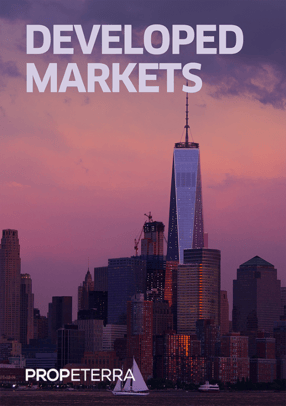As you arrive in Cambridge on the surprisingly swift- but suitably dishevelled- train from London, a sign welcomes you to the home of Anglia Ruskin University. A passing tourist or casual visitor could be forgiven for double taking. After all, the statement is not factually inaccurate, but seems to overlook the larger, more ancient university for which the city is known. Cambridge is Pitt Club and punters, May Balls and iced buns from Fitzbillies. It’s the Footlights, punting the Cam to the Green Man at Grantchester. But as the sign illustrates, it is plenty more besides. Immediately outside the station, this impression is reinforced.
The postal district, CB1, is a site of regeneration. Even a few years ago, the station was melancholic, with a generic, chain pub, and an unappetising pasty stand. Now it is an area transformed. It stands as testament to the foresight of town planners. One Station Square comprises over 129,000 square feet and is located opposite the station. Sensitively designed to mimic the surrounding architecture, it houses Amazon, Deloitte, nCipher Security and Bluestone. Just around the corner, is 21 Station Road, home to Microsoft since 2012. The US conglomerate relocated from the outskirts of the city to create a bespoke space in this state-of-the-art facility. These buildings sit within a broader complex, fostering creative and commercial collaboration.
22 Station Road is 64,000 square feet and provides a base for prominent law firm, Birketts, as well as the global engineering business, Mott MacDonald. The building further attracted Slater and Gordon, Stace and Undo, drawing on the cache of its location opposite the Microsoft research headquarters. 50/60 Station Road is over 155,000 square feet and will be supplemented by pipeline commercial space at 10/20 and 30 Station Road. Together, the CB1 estate has the character of a major business hub: blue chip occupiers, diverse economic activity and 45-minute access to London.
Part of the attraction of CB1, though, is it is not a faceless industrial park. In a trend common to other emerging neighbourhoods in Cambridge, it has amenity and recreation. There’s M&S and Sainsbury’s, artisanal coffee and steak. There’s even the improbably named eatery, Saucisse Mon Amour. It’s a cohesive, mixed used development, with hotels and artistic spaces, playing host to geometrical works, translucent drawing and bronze statues. Unsurprisingly, the developers appreciated the inclusion of residential buildings, and this supports the offices and restaurants in the vicinity.
Foster’s Mill is a 19th century building, repurposed to provide nineteen residences, and was completed in 2016. Ceres Apartments, which were delivered in 2014, are contemporary in design and provide 170 units in total. These complexes are designed to be supportive of busy professional life, with corresponding amenities. The residential quarter is completed by two further developments: Vesta Apartments, delivered in 2016, with 137 units, and Three and Four Station Square, scheduled to open this year, offering 89 luxury flats.
A development of a very different complexion is Marmalade Lane in Orchard Park, to the north of Cambridge. Unlike CB1, it does not sit amongst office buildings, but is designed to facilitate family living within easy commutable distance of the major commercial centres of the city. It provides access to the centre and the new Cambridge North railway station billed for completion in the coming years. It’s also close to Junction 32 of the A14, a major arterial road. Significant employment areas at Cambridge Regional College and Cambridge Science Park are within a short walking distance. But this is no ordinary development, but rather pioneers a concept optimistically termed ‘cohousing’.
Cohousing cannot be summarily dismissed as a fad. A kind of carnival of kumbaya, ukuleles and knitted yoghurt. It is, however, a novel concept, involving private ownership of property, but co-ownership and management of common areas. Architecturally, it promotes sociable living, with residents becoming members of a housing company to steer the development and operational thesis from inception to continued maintenance. Many of the 42 units are already reserved, but properties starting from £485,000 are still available.
This concept has already won critical acclaim. In fact, a chorus of admirers has praised its approach to living, and its capacity to enhance family life through improved accessibility, and shared facilities. These include a common house for the use of all residents, with playrooms, guest suites, and fitness rooms. In addition, there are landscaped gardens and a child friendly, pedestrianised lane, encouraging community. The Richard Feilden Housing Design, RIBA, National Urban Design and Cambridge Property Awards have all cited sustainability and design as underpinning Marmalade Lane’s success across categories.
These developments, and those in the pipeline, both centrally and in satellite districts, are vital to the sustained success of Cambridge. Not simply in the quantum of properties delivered but in how sympathetic they are to making the city a desirable place for both young professionals and those building families. Many cities globally have become victims of their own success, strangled by rapid commercial activity but unappealing or unaffordable homes. It’s a development conundrum, and one easier identified than resolved.
The truth is Cambridge is doing better than many of its peers in being imaginative in provision, but it remains unaffordable. In 2019, it ranked amongst the worst UK cities for the ratio of mean income to house price. The average sale was a fifteen times multiple of earnings, precluding many professionals at early stages of their careers. The irony is supply alone is not proving the determinant of affordability. It was a star performer in terms of housing delivery in the period 2008-2018, growing its stock by nearly sixteen percent, and appearing near the top of UK league tables. It’s most likely a temporary mismatch, which will be ameliorated through the substantial pipeline either conceived or under construction. But it is an evolving problem which needs to be monitored.
Cambridge as a centre of learning did not benefit from auspicious beginnings. Three Oxford scholars were hanged for the death of a woman, and fearing reprisals from townsfolk, fled to Cambridge, from where they buoyed the academic community and created the university. They were responsive to circumstance, and receptive to ideas. This pioneering spirit sustained Stephen Hawking, Charles Darwin, Alan Turing, even Sacha Baron Cohen. It created circumstances where understanding of evolution, stem cell research, artificial intelligence and IVF were incubated. So, if any city has the ability to address its immediate challenges with imagination, it’s Cambridge. Investors will be wise to appraise strategic land transactions in Cambridge and its sphere of influence, to ensure they benefit from first mover advantage, when housing solutions are found.







